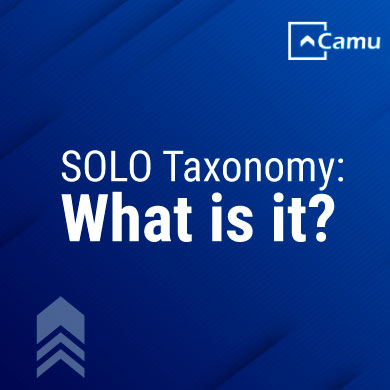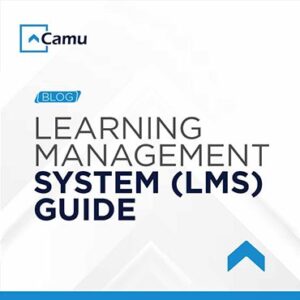
What is SOLO Taxonomy?
For a very long time, educational institutions depended on the conventional method of instruction and normalized rote learning, which never benefited students in any meaningful way. As a result, it was important for academics and educators to make modifications that would assist in modernizing the outdated educational system. They developed original approaches by identifying the main issues that students confront and taking into consideration the weaknesses of the institute.
Their efforts included developing a curriculum that was in line with the new approach. But more crucially, it became imperative to support a teaching and learning system that promotes positive habits and self-learning techniques.
Strategic frameworks for teaching and learning have become a source of inspiration for both instructors and students. Because it offered simple-to-understand learning objectives, Bloom’s taxonomy ended up being one of the main models that instructors and institutions relied upon. However, there is always an opportunity for creating new approaches and methods to assist the educational system in better meeting the needs of pupils.
That is precisely what the SOLO taxonomy accomplishes; it offers an alternate framework for measuring and evaluating students’ learning understanding.
SOLO Taxonomy: What is it?
Levels of comprehension are categorized using the SOLO (structure of observable learning outcomes) taxonomy, a visual learning paradigm.
On any subject, students may be able to grasp any of the following: nothing, something, several pertinent items, several pertinent items that they perceive to be connected, or several pertinent items they may apply in unique situations.
Prestructural, uni structural, multi-structural, relational, and extended abstract are some of the names for these levels of comprehension. Importantly, a symbol is also used to indicate each level. Use three lines to represent the multi-structural level and one line to represent the uni structural level, for example. Next, create a symbol representing the relationship level that consists of three interconnected lines.
The images depict how each level builds upon the one before it. You can’t draw three lines connected until you’ve drawn three lines, therefore you can’t jump to knowing anything relationally unless you grasp it ultra-structurally.
What Purposes Can SOLO Taxonomy Serve?
The taxonomy applies to:
1. By including pertinent activities and creative lesson delivery methods that are in tune with the subject, we may improve the quality and complexity of cognition.
2. To set learning objectives in order to provide students with precise instructions for accomplishing academic objectives.
3. To develop evaluation criteria that ultimately direct students in exam preparation and test administration using standardized procedures.
4. To develop and assess educational programmes that would assist students to become more motivated and self-assured, ultimately leading to success
SOLO Taxonomy vs. Bloom’s Taxonomy
1. A classic taxonomy that prioritizes information according to the opinions of school administrators is Bloom’s cognitive taxonomy. While SOLO is a teaching and learning concept based on studies on student learning.
2. According to Bloom’s taxonomy, there is a direct correlation between the questions posed and the respondents’ answers. While both the questions and the answers may have various degrees in SOLO taxonomy.
3. In particular, “knowledge” is distinguished in Bloom’s taxonomy from the mental operations and skills that support the knowledge component. In sharp contrast, the SOLO taxonomy is mostly focused on the understanding processes that the students employed when responding to the questions. As a result, knowledge is integrated at all taxonomic levels.
4. The complexity level may be used to gauge a student’s learning level by Bloom’s taxonomy, which also links it to a progression of challenges. However, the SOLO framework does not call for a rise in difficulty.
5. Bloom’s taxonomy lacks any criterion for predicting the consequences of any action, but SOLO taxonomy can help with this.
Levels of the Taxonomy

1. Pre -Structural Level
The student is in the beginning stage, sometimes referred to as the incompetent stage, where they are unaware of the task or subject. The students receive disconnected material that is poorly organized and makes little sense at this point. As a result, the learner is unable to comprehend the material and shows no signs of having done so.
2. Uni- structural level
At this point, the student has a fundamental knowledge of a concept or activity and only learns one pertinent part of the work or subject. As a result, although a student can establish simple and obvious connections, he or she is unaware of the significance of the relationships. The student’s response also shows that they have a clear knowledge of the assignment, although it only emphasizes one important feature.
3. Multi-structural level
Students learn about a variety of important independent aspects at this point. Despite being aware of the connections between many elements, the relationship to the whole is still unclear. If the instructor is discussing a variety of subjects and concepts, students may draw a variety of connections, but they may not get the relevance of the overall picture. Although the replies from the students are handled individually, they are based on pertinent factors.
4. Relational level
In this step, several knowledge facets come together to create a framework. The learner can now comprehend the significance of several components of the whole. They can link thoughts and ideas, which results in a comprehensive understanding of the subject. Additionally, the student’s response demonstrates that they have understood the assignment by merging all of its components, and they can explain how each component benefits the overall.
5. Extended abstract level
At this level, students can relate ideas inside the given activity and across other tasks as well. They learn how to apply and generalize ideas and concepts from one topic to another in a given field. The ‘ reaction, therefore, suggests that they have conceptual capacity above and beyond what has been taught. Depending on how well they comprehend the assignment or the subject being taught, they might provide fresh notions and ideas.
A very helpful framework for determining how well a student should or does grasp a subject is provided by the structure of observable learning outcomes (SOLO) taxonomy. This resource can be used by both teachers and students. This taxonomy allows students to classify their own comprehension as well as the level of difficulty of a lecture or topic. They are able to identify what they must do to advance their understanding of the subject. Furthermore, students understand the need of learning seemingly unrelated information since it is only after doing so that they will be able to connect it all in the following session.
When using SOLO taxonomy, learners are involved in their own differentiation and the learning process is made transparent. It draws attention to the distinction between superficial and in-depth learning, assisting students in determining where they fall on the spectrum and what they must do to advance. It is incredibly helpful for developing the curriculum as well as grading student work.







